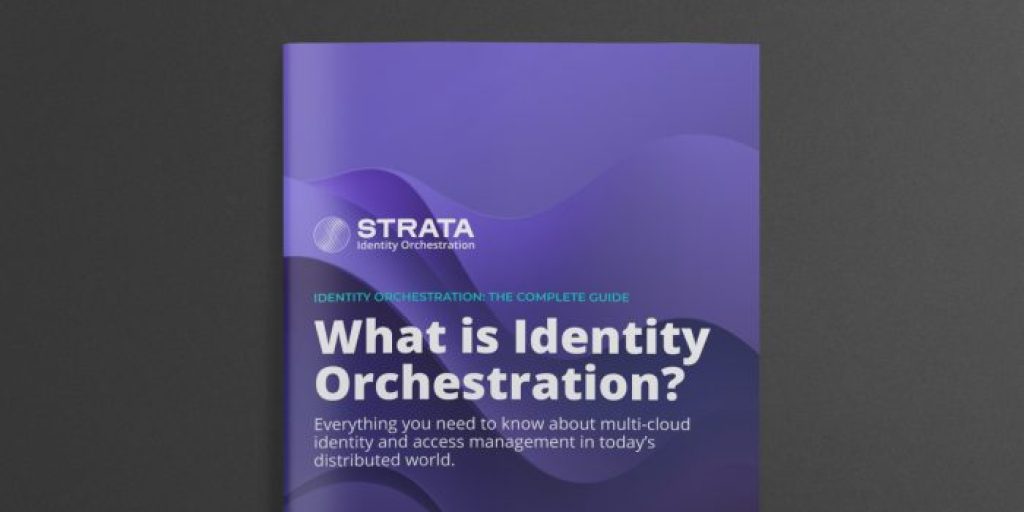Managing identity in a merger, acquisition or divestiture (M&A)
5 best practices to smoothly transition identity providers from an acquired company

Mergers and acquisitions (M&A) are crucial in growing and expanding businesses. Some big reasons for going into an M&A include increasing market share, diversifying product and service offerings, achieving economies of scale, innovation, growth, competitive advantages, and capital efficiencies.
Successful transactions can drive long-term value for the organizations and shareholders involved. However, there are also challenges in M&As when it comes to identity management such as:
- User access management
- Data governance and compliance
- Integration of IT systems
- Identity verification and fraud prevention
- Vendor and partner access
If any of these challenges are not met properly, it leaves opens the doors to cybersecurity risk.
Preventing cybersecurity risks is a big part of M&A due diligence
As significant as M&As are in the modern business landscape, cybersecurity is rarely near the top of the priority list. But the statistics may surprise you.
While cybersecurity is always top-of-mind for enterprises today, an M&A’s many checks and balances may result in briefly overlooking certain aspects to get the deal done. In a recent survey, 60% of respondents reported discovering cybersecurity issues after the deal was done, lowering the deal’s valuation.
One critical issue often overlooked is integrating IT infrastructure and identity management systems of the merged organizations. After all, consolidating disparate identity systems is at the heart of seamless operations, security, and user experience.
Overcoming Identity Management challenges
M&As require a unified approach to identity management, addressing the integration of different identity providers and ensuring secure, uninterrupted access for all users.
Each company brings its unique set of users, applications, and data, creating a complex puzzle that requires meticulous attention to detail. The goal is to create a cohesive environment where users from both companies can access necessary resources without friction and, in turn, provide business continuity and compliance.
Technical hurdles of IAM in mergers, acquisitions & divestitures
Merging identity management systems is fraught with technical and operational hurdles.
Integrating identity providers: Merging different identity providers often means reconciling incompatible systems (such as Okta and Microsoft), a complex and daunting task.
Managing single sign-on (SSO): Ensuring a unified SSO experience across all domains and applications is crucial for user satisfaction and productivity, but is much easier said than done.
Multi-cloud complexity: With companies increasingly relying on multi-cloud environments, integrating IAM systems across different cloud platforms adds another complexity layer.
Business implications of not managing identity properly during an M&A
The business implications of IAM integration are profound and impact operational efficiency, financial health, and the reputation of the merged entities.
Security risks: The integration process can expose vulnerabilities, making the system susceptible to breaches, as demonstrated by high-profile incidents that have led to significant financial and reputational damage.
Cost and efficiency: Efficiently merging IAM systems can lead to substantial cost savings and operational efficiencies, whereas failure to do so can result in financial losses and reduced productivity.
Regulatory compliance: Ensuring compliance with global data protection regulations becomes more challenging as the complexity of the IAM landscape increases.
While M&A activities come with challenges and complexities, when executed thoughtfully and strategically, they can propel companies toward sustained success and resilience in an ever-evolving business landscape.
How Identity Orchestration solves the M&A IAM puzzle
Merging identity systems is complex; Identity Orchestration offers a way to bridge the gap. Acting as an abstraction layer enables the integration of diverse identity providers, simplifying user access across merged systems. This approach minimizes disruptions, enhances security, saves money, and preserves a positive user experience during the transitional phase of M&As.
Here are a few key ways how Identity Orchestration addresses the primary identity management M&A challenges:
Seamless integration: Identity Orchestration ensures smooth interoperability between different identity systems, transforming protocols as needed. This process is essential for merging companies with diverse identity providers or authentication methods.
User experience: Maintaining a positive user experience is crucial during M&As. Identity Orchestration simplifies the user journey, allowing for the use of existing credentials and a smooth transition to new systems without the hassle of manual password resets or changes in user IDs.
Scalability: Identity Orchestration’s ability to automate the onboarding process addresses the challenge of integrating a large user base. Scalability enables efficient handling of large-scale user migrations and ensures scalability during the merger.
Security and compliance: By offering a unified view of identity data, Identity Orchestration simplifies access rights management and enhances security. It supports advanced security measures like multifactor authentication and passwordless access, aligning with compliance requirements.
Cost and time efficiency: Identity Orchestration reduces the time and cost of managing identities during M&As. Its no-code approach minimizes manual coding efforts, and its support for incremental migrations lowers the risks associated with comprehensive system overhauls.
Strategic considerations and best practices for IAM in M&As
For a smooth transition during M&A activities, organizations must focus on minimizing the impact on end-users while ensuring secure and efficient system integration.
The five best practices should be considered when planning your IAM strategy for an M&A:
- Start with a comprehensive plan outlining the integration process, timelines, and responsibilities. This plan should include an assessment of both entities’ IAM landscapes to identify challenges and solutions. Communication is vital here; keep all stakeholders informed about changes, impacts, and benefits to ensure transparency and manage expectations.
- Security must be a top priority. Implementing multifactor authentication and consistent access and security policies across the organization to protect against breaches is a good baseline. Support users through training and a robust support system to ease the transition to new systems or processes.
- Use automated Identity Orchestration to efficiently merge disparate IAM systems, reducing manual labor and potential errors. Aim for an agile IT framework that supports growth and embraces multi-cloud strategies for enhanced interoperability.
- Focus on enhancing digital capabilities by adopting best practices and technologies from both organizations. Prioritize user experience to minimize disruption and maintain productivity, ensuring seamless access and simplified login processes.
- Finally, conduct regular reviews and optimizations of the IAM framework post-integration, ready to adjust to improve performance, security, and user satisfaction. Engaging stakeholders throughout the process is crucial to ensuring a collaborative approach to address concerns and achieve a successful integration.
Achieving better Identity Orchestration with Strata Identity
Strata Identity has introduced a novel approach to navigating the complexities of integrating disparate identity systems during mergers and acquisitions. Rather than directly migrating identities, Strata’s Maverics Identity Orchestration Platform employs an abstraction layer that overlays your applications, Identity Providers (IDPs), and services.
Maverics creates a unique identity fabric, streamlining the integration process
The Maverics platform is built on a network of individual orchestrators strategically distributed across the target environment. These orchestrators, capable of operating on any system within Kubernetes clusters or as standalone virtual machines, form a distributed control mesh. They efficiently aggregate identity information from various sources for authentication or to enrich user sessions, seamlessly translating this data into the formats required by applications.
What are the advantages of Strata’s Identity Orchestration for merging companies?
A significant advantage of the Maverics approach is eliminating the need to refactor or rewrite existing applications during the identity consolidation phase. Applications that are not readily adaptable to new identity sources, especially those not aligned with the latest security protocols, are effortlessly integrated into the Maverics system.
This means that applications continue to operate with their familiar identity information, with added security controls for authentication and authorization managed by Maverics. The workload on application owners is reduced, with only minimal intervention required for testing during transitions.
Reduce risk with Maverics
Maverics facilitates a systematic and phased rollout of infrastructure changes, moving away from the high-pressure, all-at-once launch strategies that often characterize system integrations. This incremental approach allows for individual applications or user groups to be transitioned in a controlled manner, enabling thorough testing and adjustment without disrupting the entire system.
Should any issues arise, reverting changes is straightforward, minimizing user impact and maintaining operational continuity. Maverics is designed as an identity abstraction layer to offers a unified view of the integrated identity systems, allowing for deliberate, user-centric changes.
For example, introducing multifactor authentication to unfamiliar users becomes a smoother process, with the platform supporting user notification and enrollment for new security measures. This strategic layering enhances security and user experience and aligns the integrated identity management system with modern standards.
By leveraging strategic approaches like Identity Orchestration, businesses can better navigate the challenges of M&As and ensure security, efficiency, and a seamless transition for all involved.





